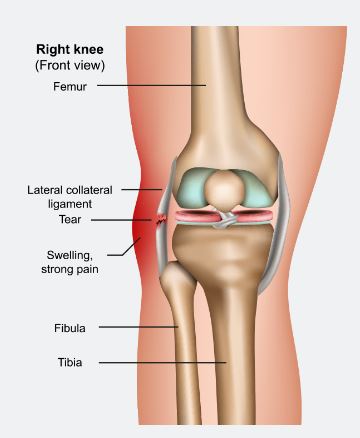The Meniscus
The knee joint is a hinged joint designed to bend and straighten. It joins the femur and tibia with a kneecap and the joint is held together by cartilage, ligaments and tendons.
The meniscus is a firm, flexible cartilage disc that sits between the two leg bones. It acts as a shock absorber and provides stability to the joint.
There are two menisci in each knee – the lateral (outside) and the medial (inside) menisci.

Meniscus Injury
A meniscus injury is any damage to this cartilage disc. Meniscus tears are the most common type of knee injury and can range from a partial tear to a complete rupture. The most common types are called bucket handle, flap or radial tear.
The injuries can happen suddenly (with a twisting-type mechanism) or over a sustained period due to repetitive actions and degradation of the cartilage
Treatment
Meniscus tears are extremely common and can be successfully treated with most patients making a full return to function.
The type of treatment will depend on various factors such as your age, symptoms, level of activity, and the extent and type of injury.
Minor tears will often not require surgical intervention and can be treated with ice, compression and rest along with non-steroidal anti-inflammatories such as ibuprofen or aspirin. + Physio can be helpful Severe tears, or those that do not heal and are causing physical disability such as knee locking or clicking and swelling, may require surgery.
Arthroscopic Meniscectomy
Arthroscopic meniscectomy involves making a keyhole incision in the knee to allow an arthroscope (a tiny camera) and tools into the joint to remove damaged meniscus tissue.
This is usually performed as a day case, meaning you will be discharged shortly after surgery to return home.
During the procedure you will be under general anaesthetic and your knee will be injected with local anaesthetic. After discharge the local anaesthetic will wear off and you may require additional pain relief with simple paracetamol.
You will have a simple wound closures applied to your portal sites and a soft, padded dressing over the top to protect you wounds. These dressings are to be left on for 10 days minimum to keep your wounds dry and clean.
If you have any concerns about your dressings or wounds please call our rooms on (03) 4216 5294. For more information about post-operative care see our Knee Surgery FAQ fact sheet.
This page can be downloaded as a fact sheet here.

